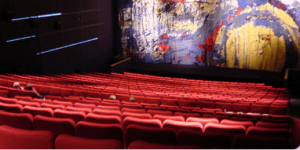 How do hearing loops work? First, they have to be connected to the sound system and switched on whenever the system is on. It’s not something people should have to ask for – because they won’t. Second, it requires everyone to use the microphone. No more, “my voice is loud enough”.
How do hearing loops work? First, they have to be connected to the sound system and switched on whenever the system is on. It’s not something people should have to ask for – because they won’t. Second, it requires everyone to use the microphone. No more, “my voice is loud enough”.
Systems vary across venues and they are not all the same. Fortunately there are some fact sheets on the various types and when they should be used.
Too often systems do not work or are not turned on and there is a lot of confusion as to how these systems operate. The best way to test a system to see if it is working is to ask someone who is wearing a hearing aid with a ‘T’ switch. Hearing Connections is one company that has a technical manager who wears such a hearing aid. This seems the only way to be sure that the system is connected properly, switched on and functioning.
Too many systems fail to work even when technicians claim they do. Here are some of the fact sheets on the Hearing Connections website.
What are Hearing Augmentation Systems? has more detail on how they work.
What Constitutes An “Inbuilt Amplification” System?
What Microphones Should I Use for Hearing Augmentation?
Hearing loops are not obsolete technology
 Some technologies are overtaken by new discoveries, but others just keep getting better. One such technology is hearing loops. The basic technology remains the same but improvements are being made over time. Modern hearing aids have not improved so much that people don’t need augmentation in meeting venues. It’s a bit like saying wheelchairs have improved so much we don’t need ramps. Hearing loops are not obsolete technology.
Some technologies are overtaken by new discoveries, but others just keep getting better. One such technology is hearing loops. The basic technology remains the same but improvements are being made over time. Modern hearing aids have not improved so much that people don’t need augmentation in meeting venues. It’s a bit like saying wheelchairs have improved so much we don’t need ramps. Hearing loops are not obsolete technology.
Andrew Stewart at Hearing Connections nicely addresses all the myths and misconceptions about hearing augmentation systems. He says that the hearing loop is still the most efficient and effective for users, and the most convenient for venue managers. Other systems are not popular because of additional equipment that needs to be worn or used, which singles users out from the crowd.
-
- Myth 1: Hearing aids have improved and sufficient by themselves
- Myth 2: Hearing loop systems are superseded by other technology
- Myth 3: The newer technology is better
- Myth 4: Use your smartphone as a receiver
- Myth 5: SoundField systems are the modern-day replacement
- Myth 6: Bluetooth is the answer
- Myth 7: Captions are good enough
An excellent resource for building designers and property managers.
Yes, you do need to use the microphone
 There are three types of hearing augmentation systems – but which one to use? The system preferred by most users is a “hearing loop”. It is connected to the sound system in a meeting room or auditorium. People wearing a hearing aid with a telecoil, have the sound sent directly to the device. It screens out all the background noise and gives definition to the speech. However, a microphone must be used all the time. So no more “I’ve got a loud voice, I don’t need a microphone” because it won’t be transmitted.
There are three types of hearing augmentation systems – but which one to use? The system preferred by most users is a “hearing loop”. It is connected to the sound system in a meeting room or auditorium. People wearing a hearing aid with a telecoil, have the sound sent directly to the device. It screens out all the background noise and gives definition to the speech. However, a microphone must be used all the time. So no more “I’ve got a loud voice, I don’t need a microphone” because it won’t be transmitted.
Hearing Connections website gives an explanation of this system, FM and Infra-red systems. A system with an ambient microphone that picks up all the sound in the room amplifies all the sounds – so background noise is included with the speech. It can defeat the purpose. Also, the system should be turned on automatically – no-one should need to ask for it – that’s the point. Building designers, owners and managers have a legal obligation to incorporate the needs of people who are deaf or hard of hearing.
